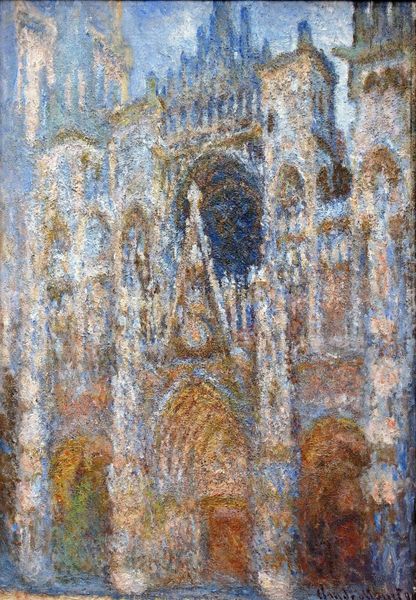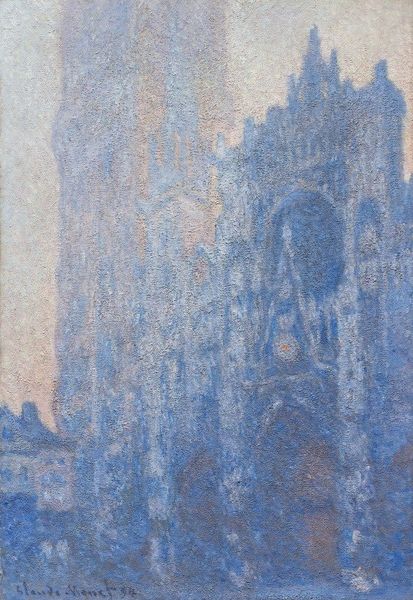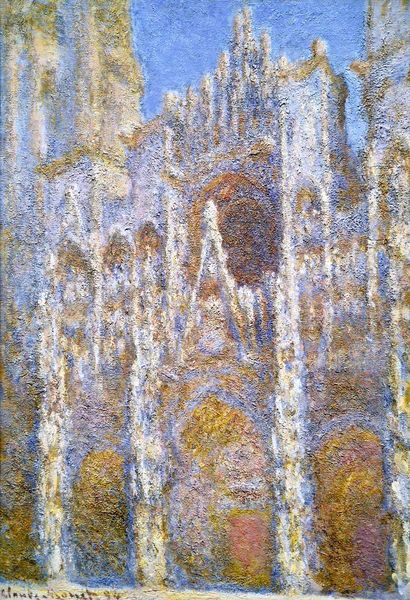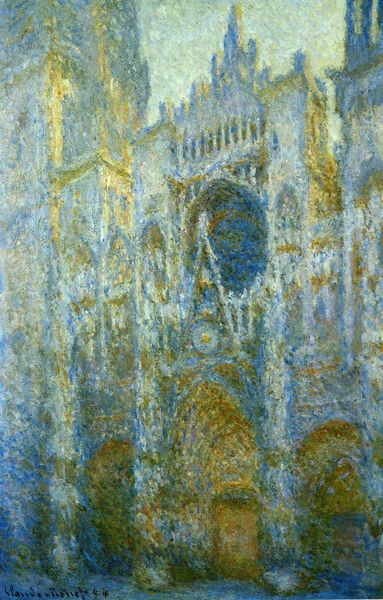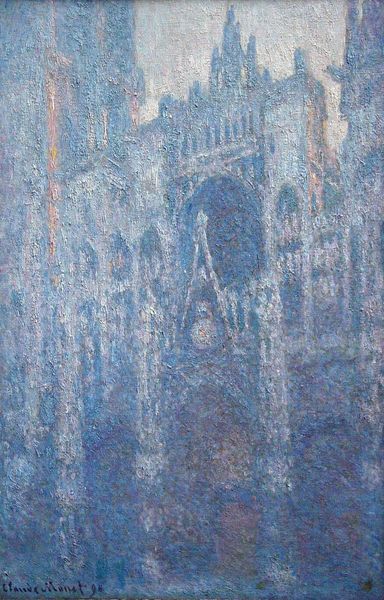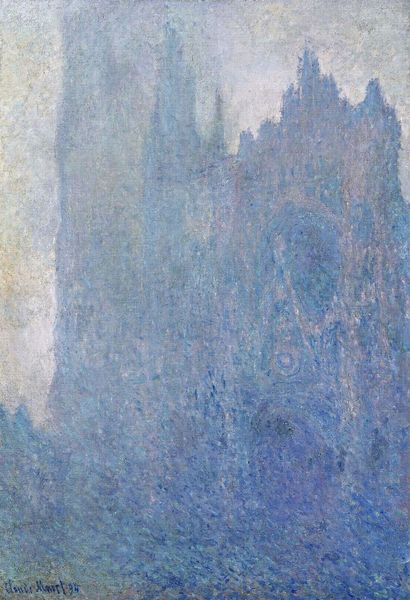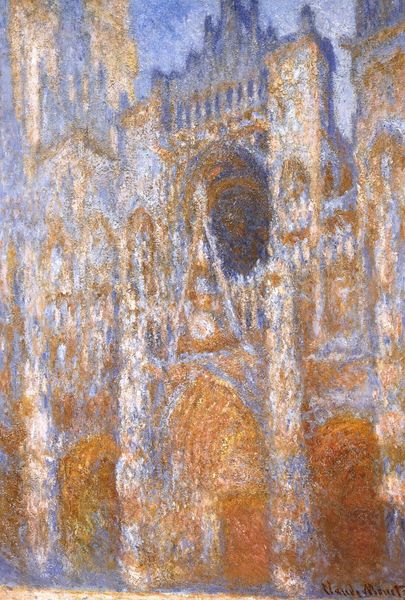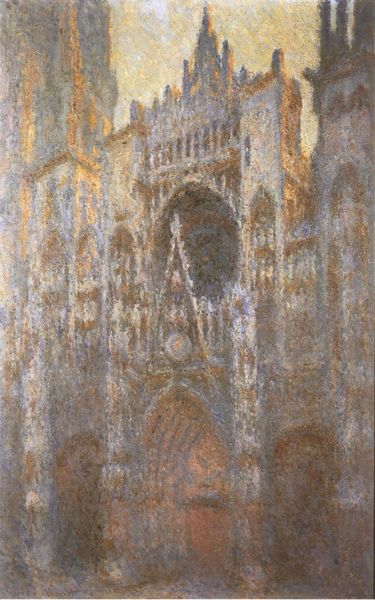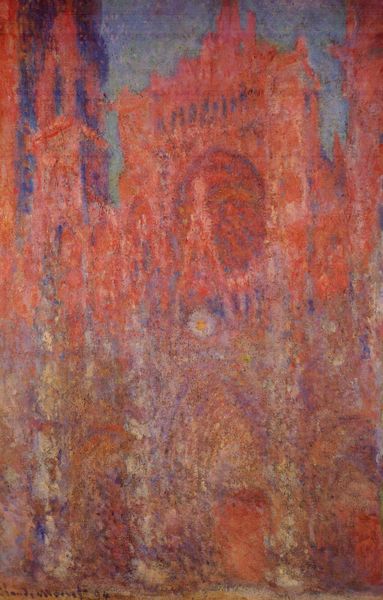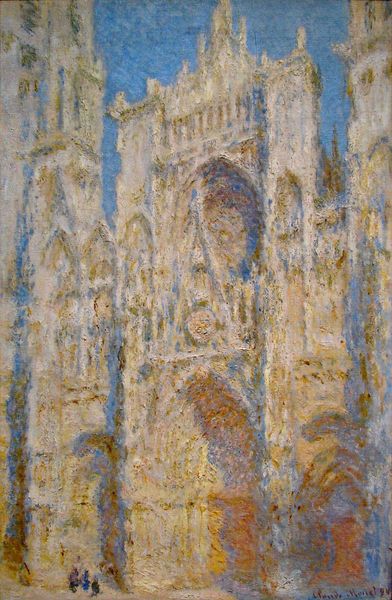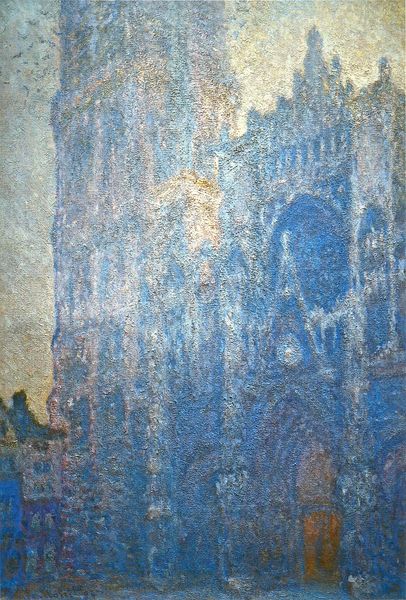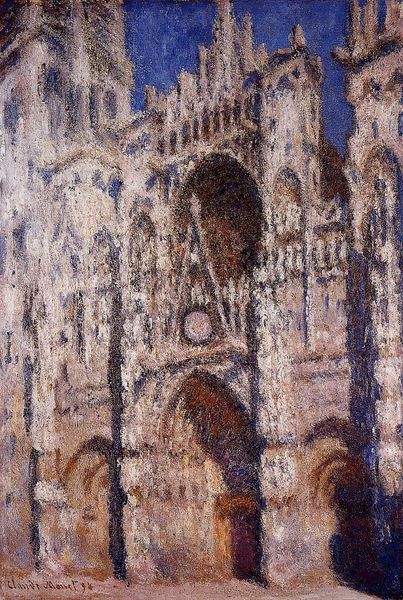
Rouen Cathedral, Symphony in Grey and Rose 1894
0:00
0:00
claudemonet
National Museum Cardiff, Cardiff, UK
#
natural stone pattern
#
abstract expressionism
#
abstract painting
#
possibly oil pastel
#
abstract pattern
#
organic pattern
#
paint stroke
#
abstract art
#
organic texture
#
swirly brushstroke
Copyright: Public domain
Curator: Stand here for a moment and really let this piece seep into you. This is Monet's "Rouen Cathedral, Symphony in Grey and Rose," painted in 1894, part of his series on the cathedral, currently residing here at the National Museum Cardiff. What's your immediate impression? Editor: Ghostly, shimmering. It feels almost like a memory, like the cathedral is dissolving before my eyes, becoming pure light and atmosphere. Curator: Exactly! It’s all about capturing the light's fleeting kiss on stone. You see, Monet wasn't just painting a building; he was painting time itself, the way light transforms everything. Cathedrals are meant to be permanent, solid, unwavering. But he captures the fact that perception is fluid, dynamic. Editor: I’m struck by the almost aggressive dissolving of architectural detail. These pinks, blues, mauves—they create a tapestry more than a structure. Does that imply something about shifting societal foundations or eroding beliefs, visualized through this iconic religious structure? Curator: Absolutely, there's that layer. Cathedrals, historically, have represented a specific dogma, cultural cohesion, an iron-clad permanence, you know? To see that dissolved through colour – almost vibration – you wonder about the certainty of the beliefs those cathedrals stood for at one time. Think of the fin-de-siècle context and its seismic shifts in science and philosophy… Everything was being re-evaluated! Monet renders the permanent impermanent, solid shifting, almost as though one’s eyesight is failing or fading and things have lost a definitive and solid form. Editor: And isn't the cathedral, in its history, always becoming? Constant rebuilding, reinterpreting. So maybe Monet's not dissolving something eternal, but actually revealing the continual re-making inherent to the symbol. Look at the interplay of rose and grey—it’s almost alchemical, as though he’s transforming base stone into light itself. Curator: I adore your read on that alchemy! A good friend of mine always used to say that Monet invented a form of secular alchemy. We used to talk for hours while gazing into the colours that felt akin to peering into furnaces where base colours are transformed into radiant emotions! You’re so right about the symbolism constantly being rebuilt and re-assimilated! So what's the main thing you are left with after this brief encounter? Editor: That cultural symbols, even those etched in stone, remain dynamic, filtered through light and perception. The flux and re-assimilation can lead us to new emotional textures of being, it can change even stone to shimmering emotion. Curator: Beautifully put. Monet would’ve adored hearing that!
Comments
No comments
Be the first to comment and join the conversation on the ultimate creative platform.

